Check out how to freeze potatoes so you can use them later in recipes, such as soups, casseroles, and roasted or mashed potatoes. You’ll learn how long to blanch them, what happens if you freeze them raw, and the best ways to use them.
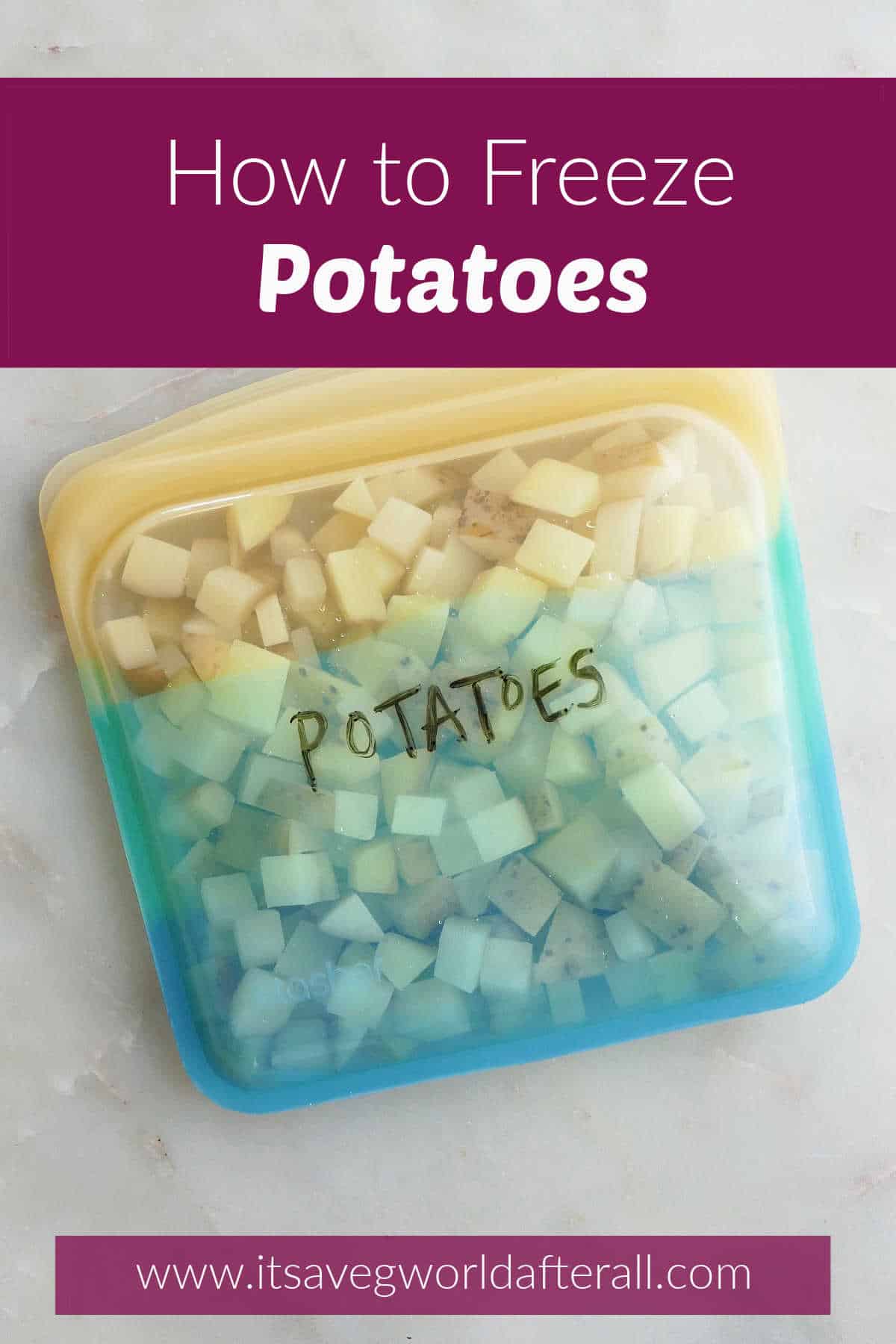
If you have extra potatoes on hand, you may be wondering about the best ways to preserve them. Freezing potatoes is a great way to prevent them from going to waste and build up a stash of ready-to-use foods in your freezer. Wondering how to freeze sweet potatoes instead? Check out my sweet potato tutorial.
Instructions

Cut the potatoes into your desired size and shape: cubes, fries, wedges, slices, or other (see How to Cut Potatoes for more information). Bring a pot of water to a boil. Drop the potatoes into the boiling water and blanch for 3 to 5 minutes (3 for cubes and thin slices, 5 for larger cuts like fries and wedges).
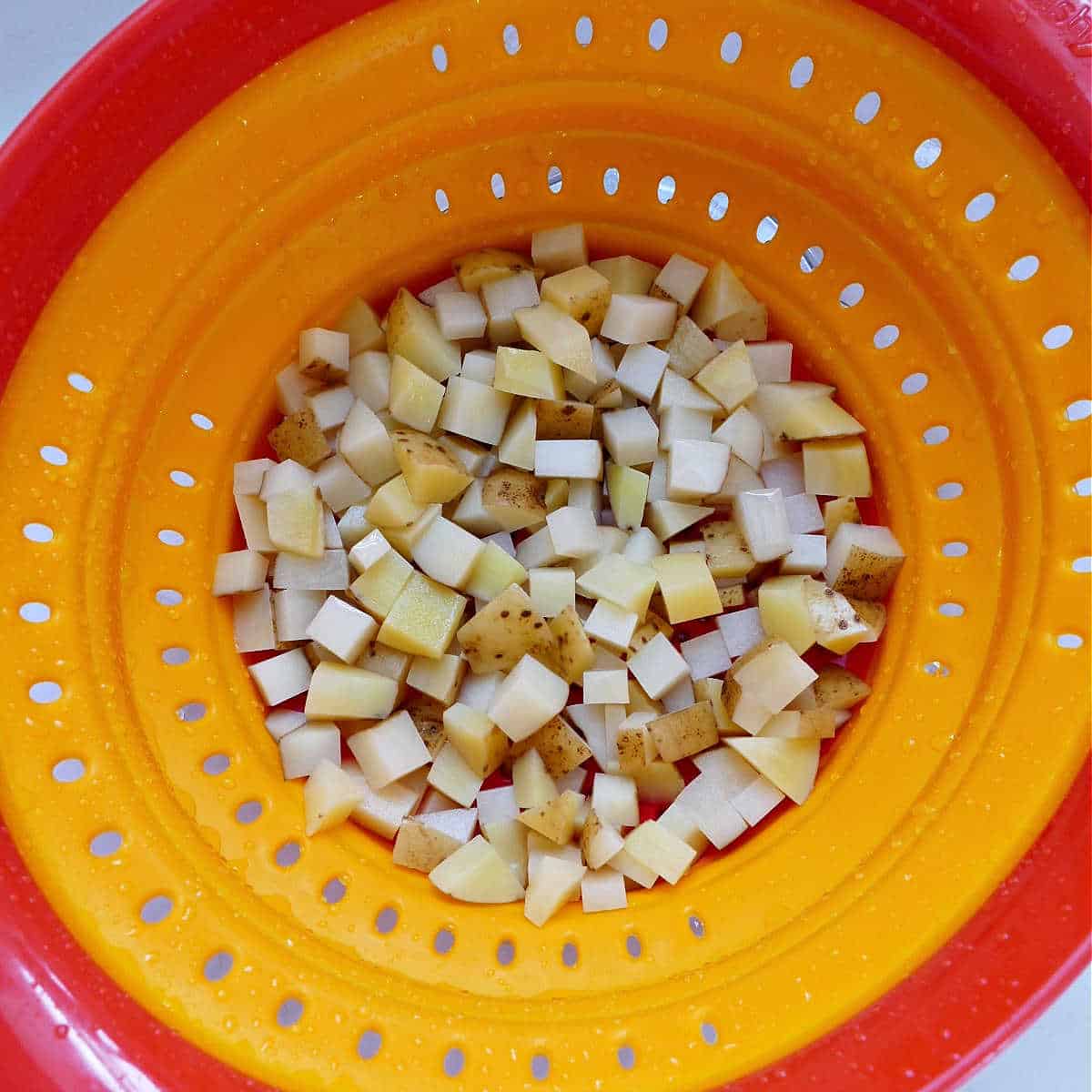
Drain immediately and rinse with cold water to stop the cooking process. Alternatively, you can remove the potatoes with a slotted spoon and submerge them into a bowl of ice water.
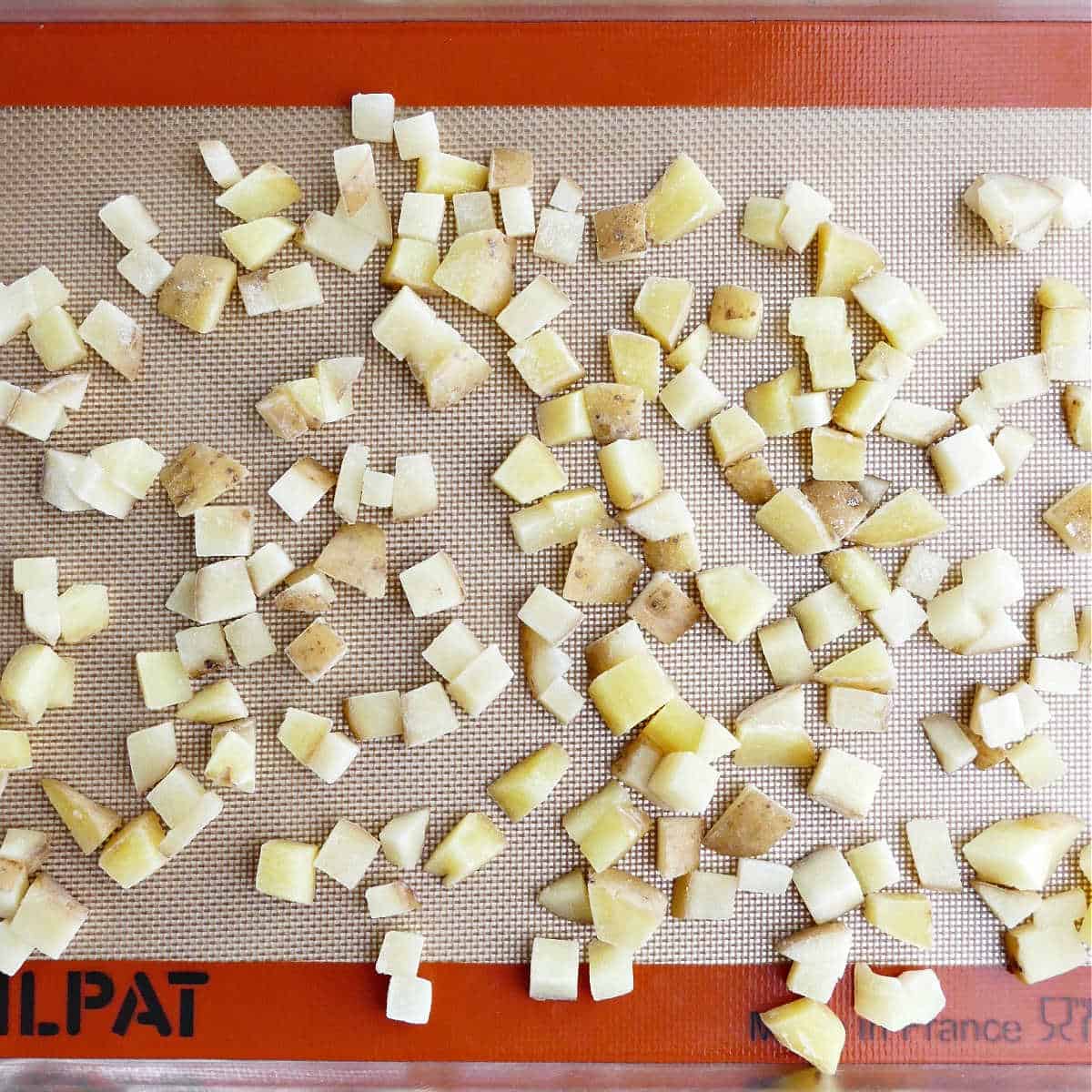
Spread the blanched potatoes in a single layer on a lined baking sheet. Pat them as dry as possible (you don’t want freezer burn from extra moisture). Place in the freezer, somewhere it won’t get bumped, for about an hour until they are frozen solid.
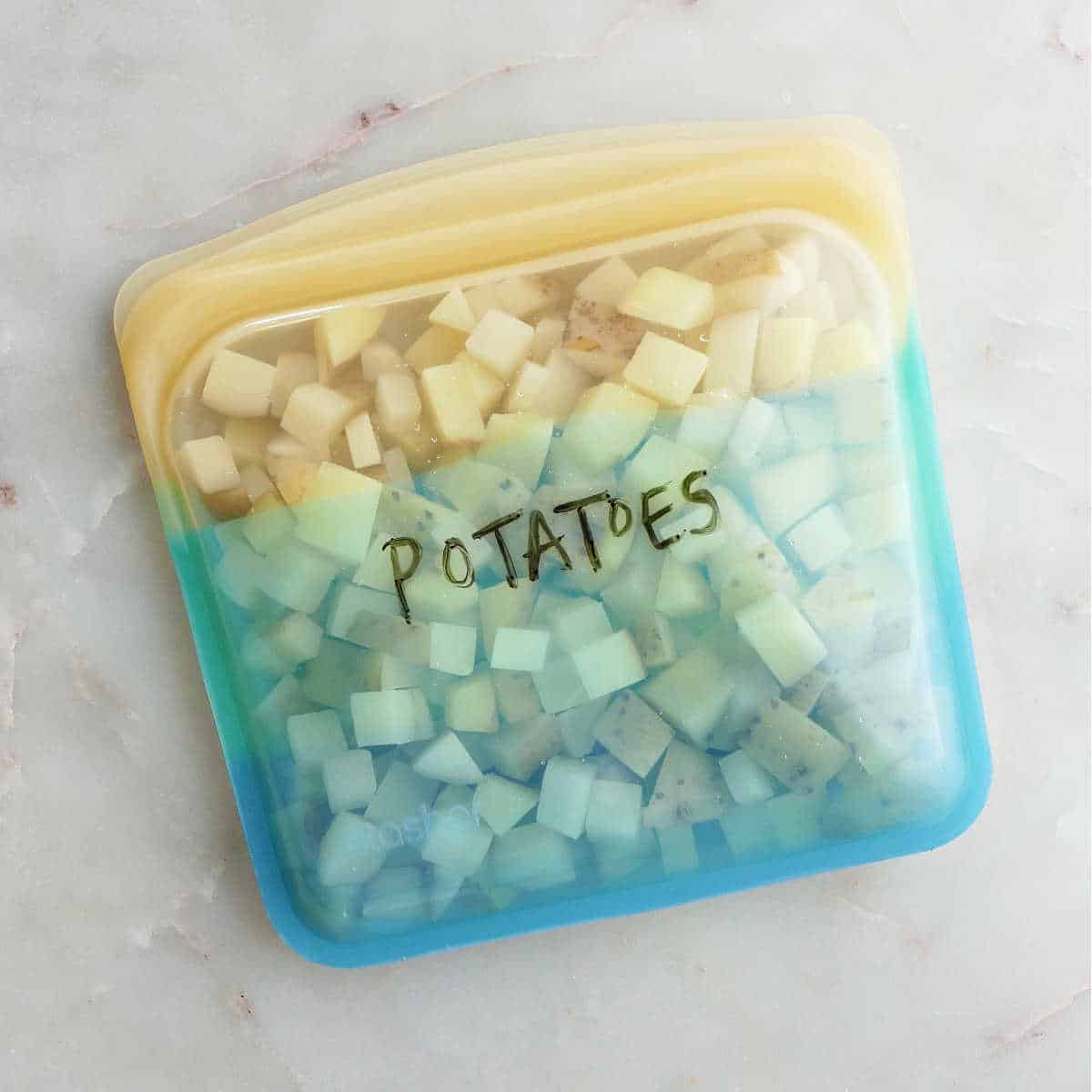
Transfer the potato pieces to a freezer-safe bag, such as a Stasher bag. Seal tightly, removing as much air as possible, label, and store in the freezer for up to 6 months.
FAQ
You may be wondering how to freeze potatoes without blanching. You technically can freeze raw potatoes and skip the blanching step. However, they will not last as long nor maintain their quality as well as potatoes that have been blanched before freezing. Frozen raw potatoes can become soggy and grainy. I highly recommend blanching whenever possible.
Yes, but it depends on the size of your potatoes. Large potatoes should be cut into pieces of your desired shape and size before being blanched and frozen. Small potatoes, such as new potatoes, fingerlings, and baby varieties, are better suited to being frozen whole with their skin on. You should still blanch them for about 5 minutes though.
These recipes technically can be frozen, but they don’t thaw well. Potato salad and potato gratins will undergo texture changes and can become soggy or otherwise less appealing when defrosted. I don’t recommend freezing these kinds of recipes.
In my experience, mashed potatoes are one type of preparation that does freeze well. However, their texture may change as a result of freezing. Still, I have found that they hold up well and still taste good when thawed unlike some potato preparations.
First, let them cool completely. Then, transfer to a freezer-safe dish. Seal tightly, label, freeze, and use within 3 months for best results. To reheat frozen mashed potatoes, thaw overnight in the refrigerator then transfer to a baking dish. Cover with foil. Reheat for 20 to 30 minutes at 350 degrees. Stir occasionally to promote even heating.
How to Use Frozen Potatoes
Now that you know how to freeze potatoes, let’s talk about using them! You can add frozen potatoes directly from the freezer to recipes that are cooked. For example, they work seamlessly in soups, casseroles, or boiled potato recipes like mashed potatoes. They can even be roasted directly from frozen.
You can use frozen potatoes in place of fresh ones in the following recipes:
I’d love to hear how you like this recipe! Rate/review using the stars on the recipe card or in the comments, and follow the Veg World on YouTube, Instagram, Facebook, and Pinterest. Looking for something totally different? Browse the recipe library.
📖 Recipe
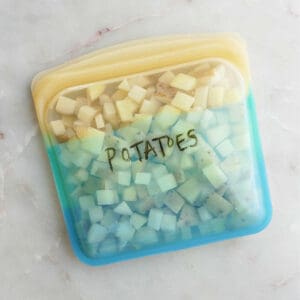
How to Freeze Potatoes
Equipment
- large pot
- Colander or slotted spoon
- Bowl with ice water
- Freezer bag
Ingredients
- 1 pound potatoes
Instructions
- You can use this method for any type of potato and preparation: cubes, fries, wedges, slices, or whole small potatoes (like new potatoes or fingerlings). Just keep in mind that the blanching time will depend on the size of your potatoes.
- First, scrub the potatoes clean. I prefer to leave the skin on potatoes, but you can peel them if desired. Cut them into your desired size and shape.
- Bring a large pot of water to a boil. In the meantime, fill a mixing bowl with ice water. Alternatively, you can set up a colander in the sink to rinse the potatoes with very cold running water if you don't want to submerge them into ice water.
- When the water is boiling, transfer the potatoes to the pot. Blanch cubes and thin slices of potatoes for 3 minutes and fries, wedges, and other larger pieces of potato for 5 minutes.
- As soon as your timer goes off, remove the potatoes from heat and transfer them to the bowl of ice water using a slotted spoon. The ice water will stop the cooking process. Alternatively, drain the potatoes immediately into a colander. Rinse under cold running water for 30 seconds to stop the cooking process.
- If using the bowl of ice water, drain the potatoes. Pat them dry. Spread out in a single layer on a lined baking sheet.
- Place the baking sheet in the freezer, somewhere it won't get bumped. Freeze the potatoes for about an hour or until frozen solid.
- Transfer the flash frozen potatoes to freezer bags or containers. Seal tightly, removing as much air as possible. Label.
- Store in the freezer for up to 6 months.
Notes
- Use within 3 months for best results.
- You can use frozen potatoes directly from the freezer without thawing in soups, casseroles, mashed potatoes, and roasted potato recipes.
Nutrition
Enjoy this kitchen hack! – Lizzie

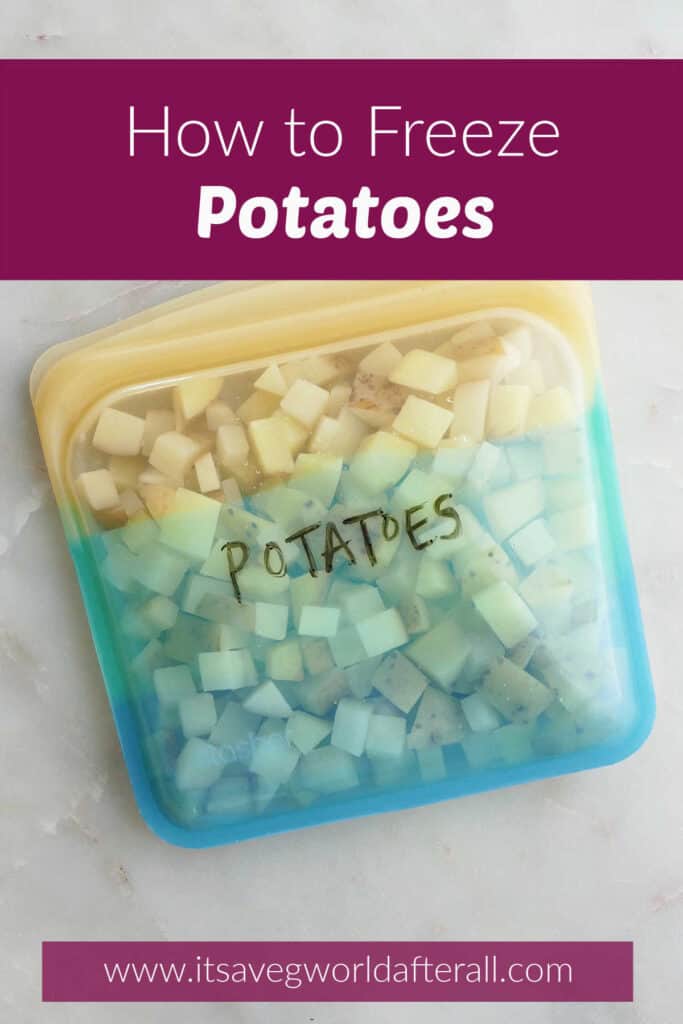

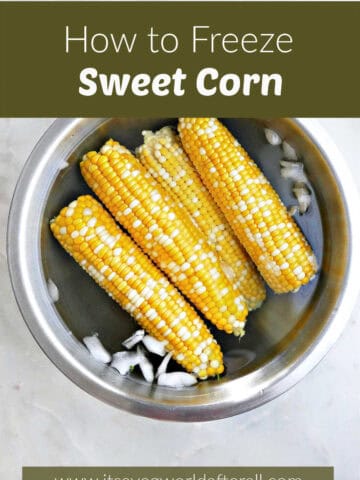
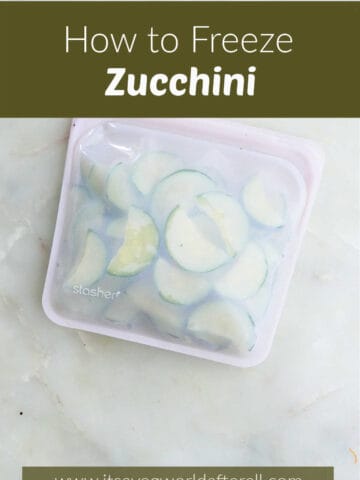
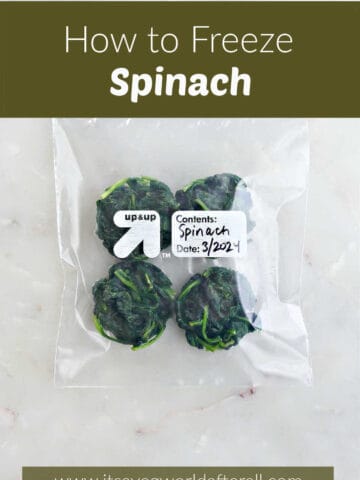
Comments
No Comments